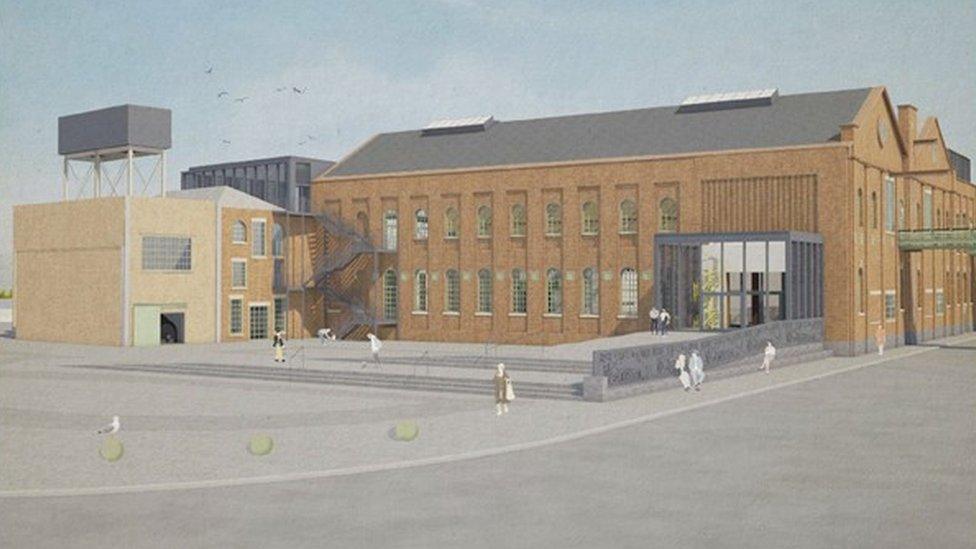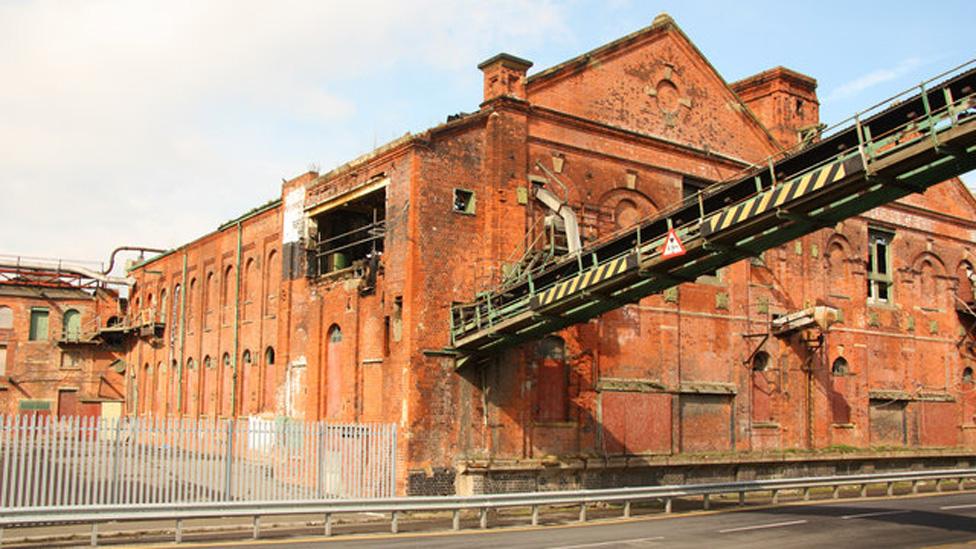Grimsby's Ice Factory to be 1,000-seat venue as plans approved
- Published

The ice house and neighbouring hotel developments are expected to create 600 jobs
Plans to turn Grimsby's derelict Ice Factory into a 1,000-seat live events venue have been approved.
The Grade-II listed building, which closed in 1990, will also house offices and a research and development area for offshore renewables.
Plans for a 161-bed hotel next door were also approved by North East Lincolnshire Council on Wednesday.
The developments, which would create 600 jobs, "will revolutionise the docks", said Councillor Bill Parkinson.
Mr Parkinson described the plans on Grimsby Docks as "a tremendous opportunity for the town".
'Radical regeneration'
The Great Grimsby Ice Factory was built in 1900 and once provided crushed ice for the town's trawler fleet.
Since its closure, the building's condition has deteriorated and it was listed as one of Europe's most endangered by heritage organisation Europa Nostra in 2018.
Developer Tom Shutes promised a "radical regeneration" of the site when he acquired it from Associated British Ports (ABP) in 2021.
"This isn't a proposal before you on a whim, it has been a number of years in preparation," a planning officer told councillors at a meeting on Wednesday.
The planning application cited the creation of 552 jobs at the site, with a further 50 jobs expected to be created at the five-storey hotel next door.
There were no objections to the plans, which were unanimously approved.
Former Chancellor of the Exchequer, Lord Norman Lamont, who lived in Grimsby when he was a teenager, was among those in support.
Lord Lamont, who was a Cabinet Minister under Margaret Thatcher and John Major, said: "I feel this would be a very valuable addition to an area right for redevelopment and regeneration."

The Grade-ll listed landmark in Grimsby has been empty for more than 30 years
The factory produced up to 1,200 tonnes of ice a day at its 1950s peak and is thought to be the earliest known surviving building of its kind in the world.
Its historic ice compressor room will be retained, along with a full representative example of the ice-making process.
In future, the south building will provide conference, events and leisure floor space at ground-floor level, predominantly in the former ice making hall and refrigerated store.
The boiler house will provide food and drinks facilities.
The first floor of the building, as well as the former ice-making halls of the northern building, will be used for office space.
Councillor Steve Holland said: "The vision behind it is exemplary."
The two sites are currently surrounded by private, ABP-owned land.
A council officer said "discussions are ongoing" about making the area more publicly accessible.

Follow BBC East Yorkshire and Lincolnshire on Facebook, external, Twitter, external, and Instagram, external. Send your story ideas to yorkslincs.news@bbc.co.uk, external.
Related topics
- Published12 September 2023

- Published15 March 2018
